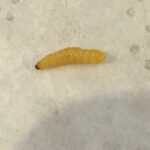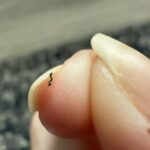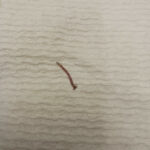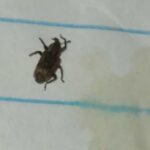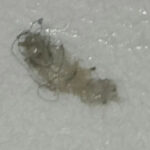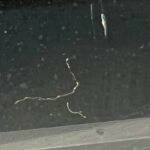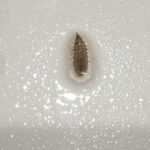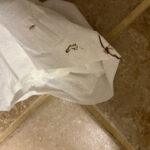What are California Blackworms?
California blackworms (Lumbriculus variegatus), are an aquatic worm used as fish food and can be purchased at many pet stores that sell fish and aquarium supplies. Mature blackworms are usually composed of about 150-250 segments. They are hermaphroditic, meaning, they contain both male and female sex organs. Sexual reproduction, presumed to be rare, involves direct embryonic development within a cocoon. Asexual reproduction by self-fragmentation is common. In a laboratory or home setting, this seems to be the blackworm’s only means of reproduction.
Blackworms move by means of circular and longitudinal muscle contractions acting on the worm’s hydrostatic internal skeleton (the fluid-filled body cavity or coelom) in each of its many segments. Blackworms nave several different forms of movement, however, making them one of the most acrobatic types of segmented worms. Depending on sensory cues present in the worm’s immediate environment, they can exhibit any kind of movement.
How Do you Raise Blackworms?
Blackworms are easy to raise at home or in a classroom environment. This means that they are readily available year around. They can be cultured and easily maintained in a deep pan or small aquarium filled with 23 inches of spring water or aged tap water. Keeping the blackworms at room temperature will allow populations to double in about 34 weeks or less. When transferring your first dozen, healthy worms into the aquarium or pan, use a disposable plastic pipette. Make sure the worms are not damaged before transferring as this could compromise the entire batch. In addition, do not handle or transfer worms with forceps or hooks. These types of instruments can easily injure the worms.
Next, cover the bottom of the container with enough strips of brown paper towels The towel serves as a fibrous substrate of decomposing material for the worm. But is also serves the same purpose for microscopic bacteria such as protozoans, rotifers, and ostracods.
The primary food source for your blackworm farm will be sinking fish-food pellets. Start by adding one or two pellets, then after a few days, add one or two more, but only if the others have been eaten. Do not overfeed your worms. Decomposition of uneaten food may contaminate the aquarium and cause a mass die-off of worms by irregular feeding patterns or long periods of starvation.
Be sure to replace any lost water by adding spring water or distilled water. You should replace culture water regularly (about every two weeks)
Handling Blackworms
When handling blackworms, make sure you handle them while they are in water. You can use an eyedropper or plastic disposable pipette to suck one or two up, along with a little water. Do not pick up or handle blackworms with hooks, metal probes or forceps. Injuries, even slight injuries can cause the worms to self-fragment or autotomize. However, the worms can regenerate. In fact, the regeneration of missing parts occurs rather quickly. Development of a head, which is usually 8 new segments in length and/or a new tail, ranging from 20 to 100 or more segments in length, is usually completed in 23 weeks.
All About Worms is always free, always reader-supported. Your tips via CashApp, Venmo, or Paypal are appreciated! Receipts will come from ISIPP Publishing.



